We collect and analyse fingerprints to better understand the needs of law enforcement
Contributors

Michaela Franková
Business Consultant –
Forensics, Innovatrics
Inside the Innovatrics forensic lab, you will find a mix of high-tech fingerprint gadgets and traditional brushes and powders for lifting fingerprints. Michaela and her team use these tools just like the police do in order to identify criminals – firstly to collect fingerprints to expand and improve their database and algorithms, but also to give them a unique insight into the needs of law enforcement.
There was a bold robbery at a fancy jewellery store. The thief stole multiple precious items but left behind the most valuable thing: their fingerprints. The police detained the suspect, but the hard part of their job is only about to begin. How do they locate the all-important fingerprints and lift them from various surfaces? What happens once they transfer the prints to the station? And can the fingerprints found at the crime scene prove the suspect’s guilt in court?
To answer these questions we asked Michaela Franková, consultant in forensics at Innovatrics, to walk us through the case and show us, with the help of the technology used inside the Innovatrics forensic lab, how the police would investigate the robbery, step by step.
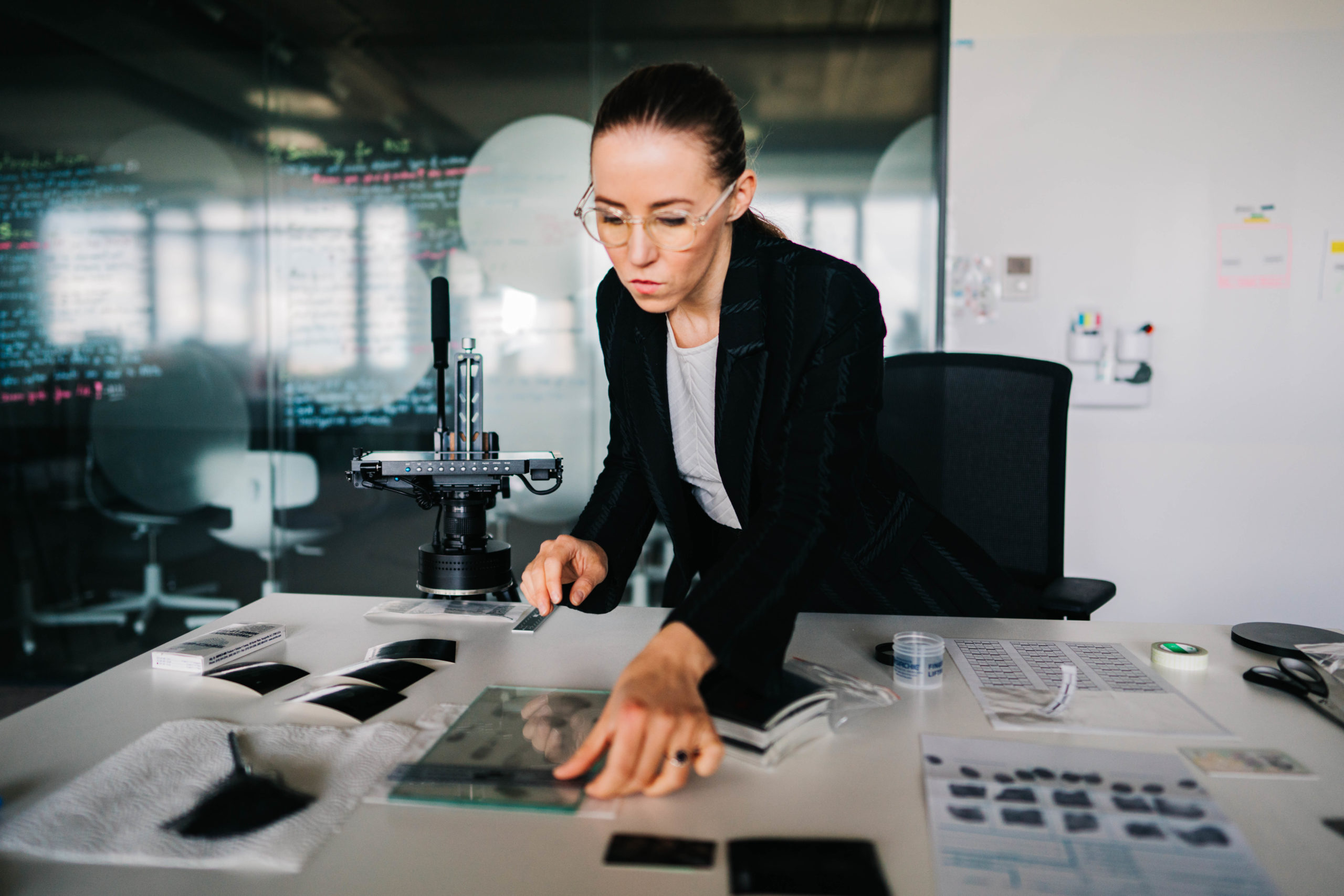
We leave a trace on everything we touch
Did you know that you leave fingerprints on almost every surface you touch, even though you often cannot see them? These invisible fingerprints are called latent fingerprints and their biggest advantage in criminal investigations is that perpetrators unknowingly leave them around the crime scene. However, they also take the police a lot of effort to find.
Since fingerprints are created from the natural oils and residue left on our fingers, some surfaces preserve them better than others. “It is easier to find fingerprints on nonporous surfaces, such as plastic, glass or any kind of metal, because these materials have no pores that would absorb the sweat and oil from our fingers,” explains Michaela, pointing to a glass wall she uses for collecting fingerprint samples from her colleagues.
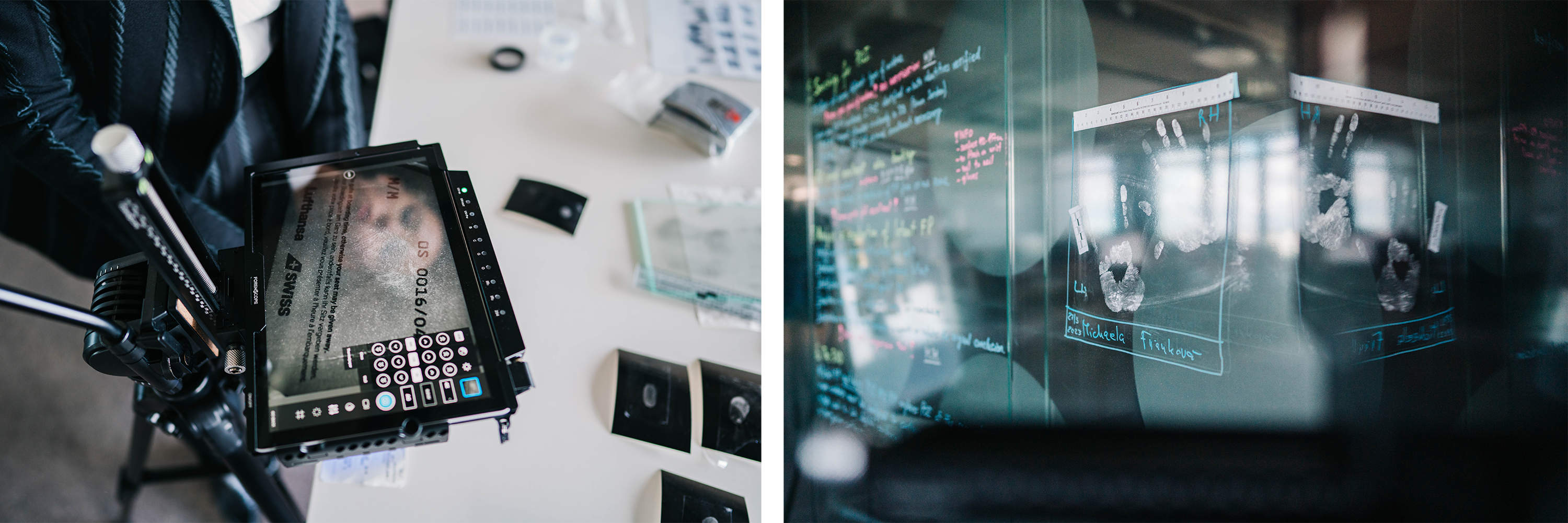
Still, it is also relatively easy to lift fingerprints from porous surfaces such as cardboard or any kind of paper. The real challenge comes when the only available fingerprints are left on leather or human skin.
“When a murder occurs, the police often only find the crime scene hours later – when the latent fingerprints, which do not last long on human skin, are already gone. So, even though it is possible to preserve latent prints on human skin, it is not used in reality,” adds Michaela.
Wash your hands and throw away the butter
Our robbery took place in a jewellery store and police assume the place is covered in fingerprints made by the thief. Other than the invisible latent prints, our thief might also have left a more visible type of fingerprint evidence: latent and plastic prints.
Have you ever been eating something greasy and then suddenly your phone rang and you had no choice but to pick it up? The greasy fingerprints you left all over your phone are called latent fingerprints. They occur when you touch a surface with a visible substance on your fingers – such as paint, blood, ink or grease.
“Police often come across bloody fingerprints at crime scenes, especially when someone commits a violent act in anger. In such cases, the person may have blood all over them, making it easy to leave visible prints behind,” clarifies Michaela.
Plastic fingerprints are also easy to spot because they are created when someone touches a mouldable object such as wax, butter or soap, leaving a three-dimensional impression of their fingerprint on the surface.
Based on the nature of the crime at the jewellery store, it is unlikely that the perpetrator left bloody or greasy fingerprints or that they accidentally put their hand into a block of butter. The police will, therefore, have to work with just the latent fingerprints.
The power of ForenScope
Latent detection device
Used by the police to quickly uncover latent fingerprints over large areas, they point the small device at a surface potentially covered with fingerprint evidence, and use different light filters to reveal all the hidden fingerprints, before digitally capturing them and sending them on for further analysis.
A great advantage of using ForenScope is that it allows the police to capture fingerprints without lifting them with powder and tape, meaning they do not disturb the DNA evidence. Instead, they simply swab the surface to collect any additional DNA evidence and take the ForenScope with the safely stored digital fingerprints with them for further processing.
Other types of evidence
Collecting evidence is delicate and requires an exact procedure to prevent contamination. This is what it typically looks like:
- The crime scene is cordoned off
- Only authorised personnel are allowed entry
- Everybody entering the crime scene signs into a designated logbook
- It is a must to wear personal protective equipment, such as gloves
- All tools are clean and ready to use
The process may vary in different countries. In some cases, a forensic investigator and their team decide how to divide the crime scene and gather evidence.
When collecting evidence from the jewellery store, the police look for tool marks, shoe prints, hairs, fibres, DNA and fingerprints, as well as footage from CCTV cameras. Since one person cannot cover the entirety of a crime scene, a team of examiners work together. To achieve a bulletproof system, the investigators divide the scene into grids and search square by square.
How to spot a fingerprint
To uncover invisible fingerprints, the police at the jewellery store focus on entry points and robbery-affected areas, such as door handles, glass cabinets with stolen jewellery and receipts found scattered around the glass cabinets. By using alternate light sources like a flashlight, they inspect surfaces from different angles, looking for any trace of a fingerprint.

As the perpetrator moved around the jewellery store, they left behind multiple partial fingerprints. These partial prints are only a small part of the complete fingerprint. Perpetrators often leave only partial fingerprints at a crime scene because we, as people, naturally do not touch or hold objects with the entirety of our fingertips.
“Partial prints are still important as the police need to extract all kinds of evidence they find at the crime scene, because they can never know if this piece of evidence is the one that will make a difference between a conviction or non-conviction,” says Michaela.
Can fingerprint experts determine how
fresh a fingerprint is?
An expert can tell how old a fingerprint is from how it looks – a very fresh fingerprint contains a lot of oil and sweat, meaning that the ridges are visible.
For older fingerprints, the police can locate them with UVC light, but they have to be careful not to destroy the DNA on the fingerprint, which can happen if they expose the print to the light for too long.
If the environment is right, a fingerprint can be preserved for decades. Just leave it somewhere dry, for example on a page of a book inside a bookshelf, and it will most likely stay there for a long time.
Lifting fresh fingerprints
What the police do once they discover a fingerprint depends on the surface on which they found it. For example, if they find a fresh fingerprint on a small portable object, such as a shard of glass, credit card or flash drive, they will carefully package the item, document where they found it and bring it to the lab for further examination.
However, what if our perpetrator left fresh prints on door knobs or big glass cabinets that can’t be moved? “In cases like these, the experts have to lift the fingerprints right on the spot. To do that, they apply special fingerprint powders that make the prints visible and then lift each print with tape for identification.
Lifting a fingerprint with tape means that no trace of the fingerprint will remain on the surface where the print was first discovered. The police are taking the whole print with them to the lab,” clarifies Michaela.
In the case of our robbery, Michaela will demonstrate at the Innovatrics forensic lab how the experts lift fingerprints from three different surfaces: a glass cabinet, a door handle and a paper receipt.
However, before the fingerprint lifting operation begins, it is crucial to take photos of the print because there is a high risk of accidentally damaging it during the process. The police take a photo both before and after applying powder, and again after successfully lifting the print with the tape. These photographs are important parts of the evidence – to show that the fingerprint existed and what it looked like at each stage.
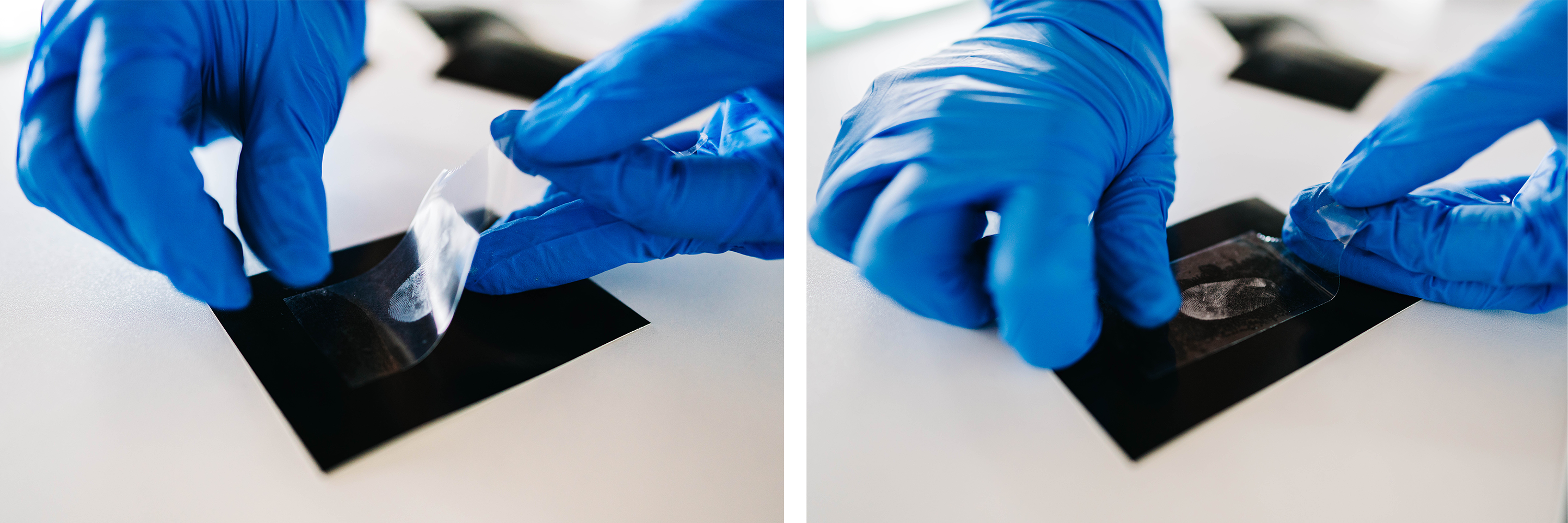
Glass cabinets
Glass is a non-porous surface, so lifting fingerprints from it should not be as challenging. Based on the colour and brightness of the surface, the experts decide on the colour of the powder and the type of brush.
“For transparent glass, the experts would most likely lift the fingerprint using silver fingerprint powder, a marabou feather brush and regular lifting tape. Because they are using silver powder, they would transfer the print onto a contrasting background – typically a black piece of special paper.
Once they’ve determined their approach, they would gently sweep the powder over the surface to reveal the fingerprint. Then, they carefully place the tape over the fingerprint and peel it off, preserving the oils and sweat from the print. To keep it intact, they attach the tape to a contrasting background, in this case, the black paper,” explains Michaela, demonstrating the lifting technique inside the lab.
This way, the fingerprint stays visible and the police can safely transport it, upload it into the system and further analyse it.
Door handles
Door handles are usually made of metal, which is also a non-porous surface. However, door handles are not typically flat, so the experts have to use a special stretchy tape to lift the fingerprint. When doing so, they must also try to avoid creating air bubbles on the tape, as any air bubble means they will not be able to lift that part of the fingerprint.
Upon asking Michaela if the police could use regular tape that people usually keep at home, she replied that it is technically possible to lift a fingerprint using a makeup brush, face or talcum powder and regular tape: “One could basically lift a print with the stuff found in one’s purse. However, the police use tapes such as acrylate, gel or polyethene stretch lifting tapes. They all look like regular transparent tapes but they preserve the fingerprint better.”
Lifting a fingerprint with a powder and tape destroys potential DNA evidence
Using the powder and tape technique destroys the ridges on the fingerprint, making the collection of DNA impossible. If the police do not have a latent detection device, such as the ForenScope, that is able to capture the print and analyse it without destroying DNA, they can still photograph it and then take a DNA swab.
Paper receipts
Paper is typically a porous surface, which makes the lifting process harder. When working with paper, the police can use silver powder or black magnetic powder and a magnetic brush to reveal the fingerprints.
“However, if you wish to encounter the real challenge, try to lift fingerprints from paper money,” says Michaela, while using a special latent detection device to capture prints from a receipt. “Money has various textures, shiny parts, porous areas and different colours. Lighting and brightness affect the print on each part of the bill differently. We often get only fragments of the fingerprint.”
To enhance the visibility of fingerprints on difficult surfaces, forensic investigators might use a latent detection device, such as ForenScope, or place the object in a Fingerprint Fuming Chamber with an appropriate substance, for example, an iodine solution. This process also helps to reveal the hidden prints on objects like guns, drink cans or glasses.
Tips for achieving good quality fingerprints:
- the suspect should have clean hands
- if the suspect’s hands are too dry, the examiner should give them cream
- if their hands are too sweaty, the police should offer a disinfectant
- if the suspect does not cooperate, the police should hold them from behind, take their hand and perform the desired technique
- to ensure that the suspect does not put a strain on their hand or smudge the fingerprint, the table with the scanner should be around 120 centimetres high
Back at the station: fingerprint booking
While the experts are busy lifting the fingerprints from the jewellery store, the police take the suspect to the police station for a process called booking, where they formally enrol them into the system. To do this, the police need to have a probable reason.
“The booking process differs from country to country, but usually, the police take a frontal photo, a profile photo, and sometimes a left quarter profile photo. Then they use a scanner to scan the suspect’s fingerprints,” explains Michaela.
There are different types of scanners, such as optical fingerprint scanners or capacitive fingerprint scanners. The police scan all fingers, starting with “slap fingerprints” which uses the typical 4-4-2 technique where they first scan flat images of all four fingerprints from the right hand at once, then the same from the left hand, and finally the two thumbs.
Next up are the rolled prints, where the operator rolls each of the suspect’s fingers from nail to nail, one finger at a time. “Since the police often find partial fingerprints at crime scenes, the goal of this technique is to capture the sides and all other parts of the finger, to mimic the way people hold objects,” adds Michaela, while demonstrating the rolling technique on each finger.
After the suspect’s enrolment, the police fill in all the additional information they have about the suspect and the crime, and most likely then interview the suspect and take their DNA.
In the name of bias – the case of Brandon Mayfield
Brandon Mayfield is a Muslim-American convert who experienced a grave injustice due to a falsely matched fingerprint. He was accused of involvement in the 2004 Madrid train bombings. The FBI had initially claimed that a fingerprint found on a bag containing detonating devices matched Mayfield’s fingerprint.
Mayfield was arrested and put into prison, even though he was at home in the U.S. on the day of the attack and had not been off the continent in over 14 years. He did not even have a valid passport.
In the meantime, Spanish authorities announced that the fingerprints actually belonged to an Algerian called Ouhnane Daoud. Mayfield was released from prison and received a formal apology. The case serves as a stark reminder of the need for an unbiased investigation.
Is there a match?
One thing should be clear right from the beginning: only experts can analyse the evidence, not regular police officers. The evidence from the crime scene is sent out to different experts depending on the type of evidence – DNA evidence goes to a DNA expert, CCTV camera footage goes to anthropologists or digital evidence departments, and fingerprints go to fingerprint experts.
“All these experts analyse and provide their results without knowing anything about the case. Their role is simply to confirm (or refute) a match between two or more fingerprints and leave the decision making to the investigator. They can share their result with another fingerprint expert, just for peer-to-peer confirmation – especially if it is a high-profile case where a whole country is watching, but that’s about it,” stresses Michaela.
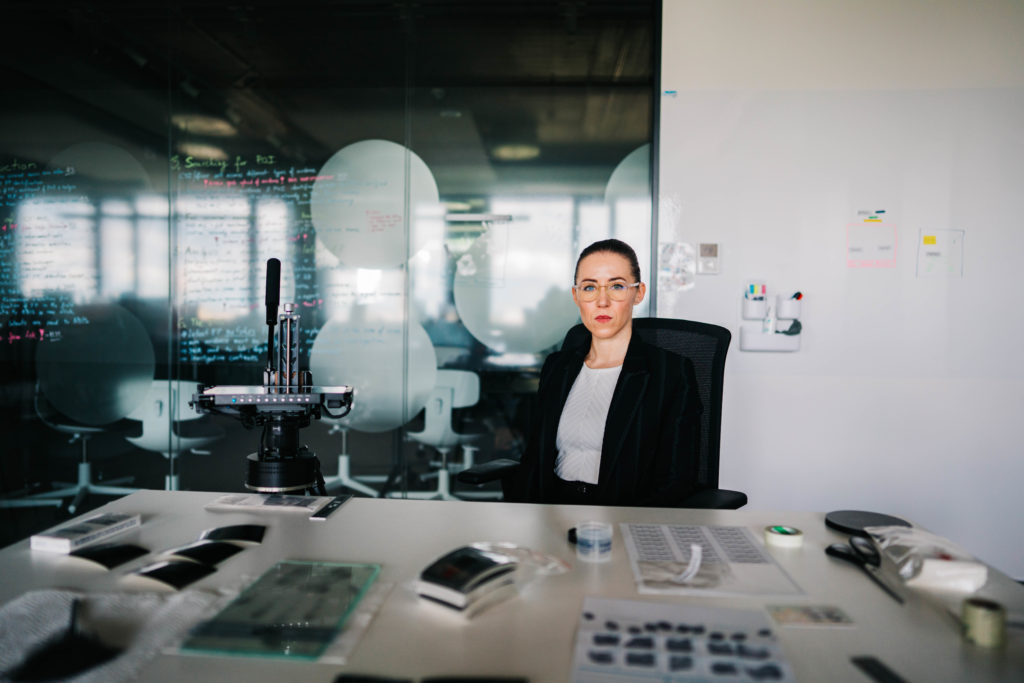
It is, however, important to remember that even though the evidence from our robbery is being analysed by an expert, this process can differ from country to country. Having an expert analyse the prints is preferred though, because it minimises any bias that could emerge if the person analysing the evidence already knows things about the case. When we already have an expectation of an outcome, our minds are easy to trick into believing there is a connection when in reality there is not.
Can the police convict someone based on a fingerprint match?
The expert found a match between our suspect and the fingerprints lifted from the crime scene. So, what happens now? Does this mean that the police definitely have the right person?
“In the past, before the introduction of DNA techniques, the police could have convicted someone based on a fingerprint match only. However, it is not likely anymore because the police are always on the lookout for multiple kinds of evidence in order to convict someone,” says Michaela.
This would be the case with the jewellery robbery as well. A fingerprint match is not enough to convict our suspect because a match does not necessarily mean that the person stole anything. “The suspect could just be a client who previously stopped by, looked at the products and left fingerprints behind. It might be suspicious if the fingerprints were found inside the glass cabinet, because customers are not typically allowed to put their hands there, but it is still not enough for a clear conviction,” adds Michaela.
An increasingly important part of evidence today comes from CCTV cameras, which are usually installed in every jewellery store. Cameras are a powerful tool because they can show exactly how the crime was committed and serve as supporting evidence for the fingerprint match.
In addition to CCTV footage, there could be other supporting evidence such as witness statements, clothes fibres or hairs. In our case, the police are going to analyse more evidence and find out if there is enough evidence for a conviction. However, the important message to remember is that even if the police lifted perfect fingerprints from the crime scene, it might still not be enough to prove someone’s guilt in court.
Why does Innovatrics have its own special forensic lab for fingerprints?
The role of the lab is to collect fingerprints from various surfaces using different lifting methods, enrol them into our ABIS, and analyse them. For that, we mainly work with our colleagues’ fingerprints. Besides lifting fingerprints, we also utilise our ABIS to enrol the prints into our fingerprint database.
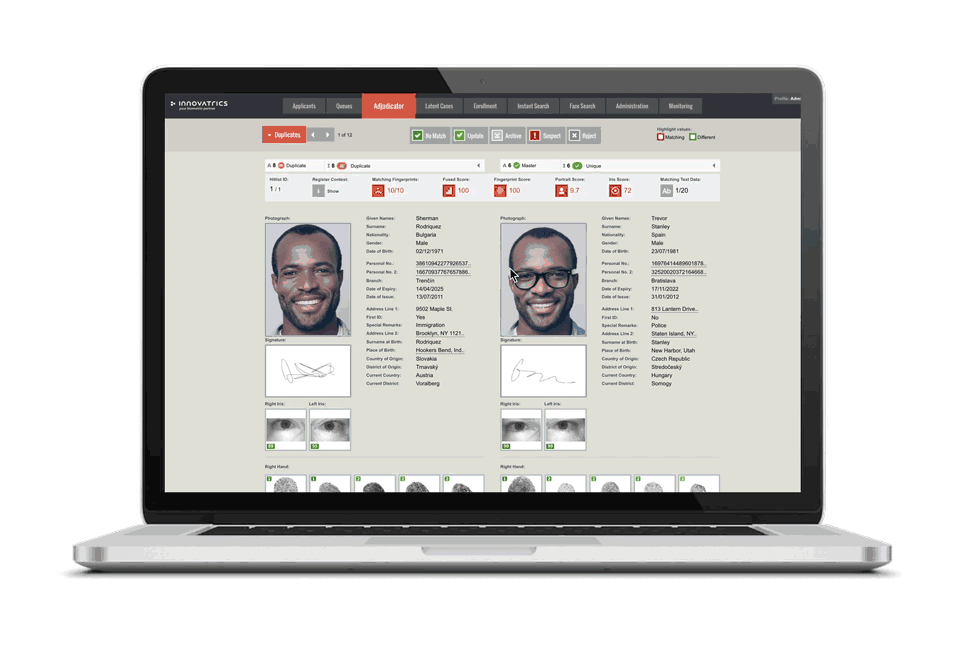
The goal is to create our own fingerprint database to improve our algorithms and test the functionality of our software. Even though there are special training databases that biometric companies can use for benchmarking, we wanted to differentiate. And since downloading fingerprints from the internet or obtaining them from law enforcement agencies like the police or FBI is not possible, we have set out on the journey to generate our own.
Another objective of having our own lab is to assist our clients in law enforcement in understanding the entire fingerprint identification process, from collection to software functionality. Having consultants in forensics with field experience helps us to achieve this.
AUTHOR: Kristína Zrnčíková
PHOTOS AND VIDEOS: Magdaléna Tomalová









